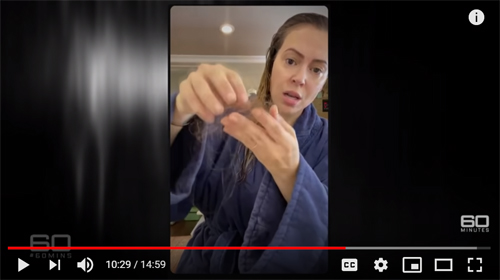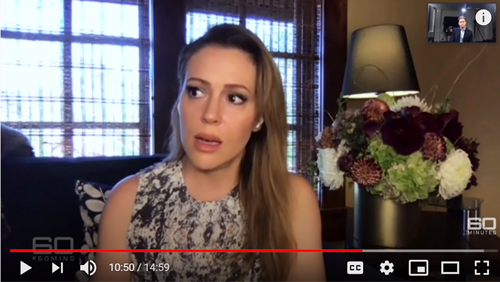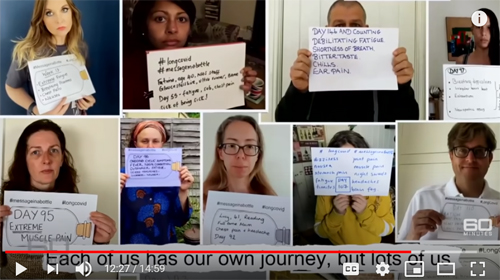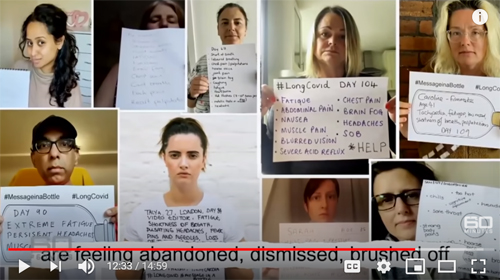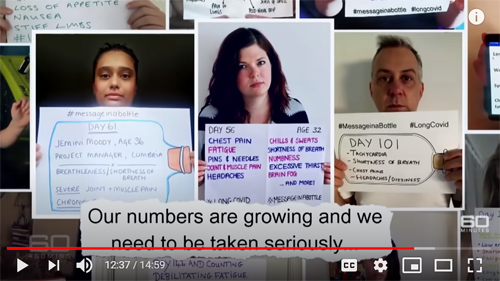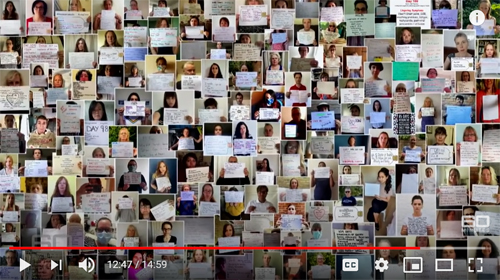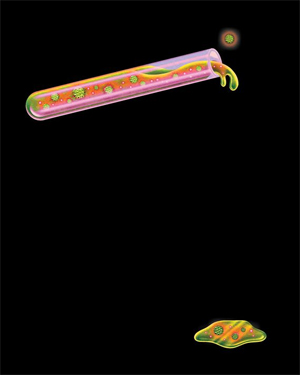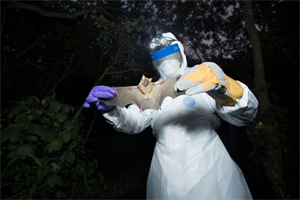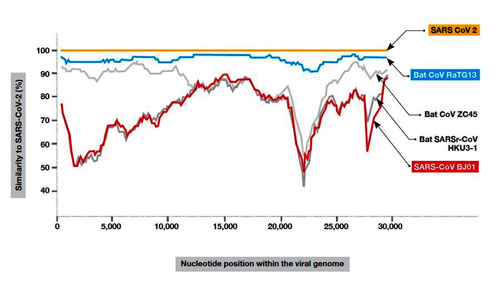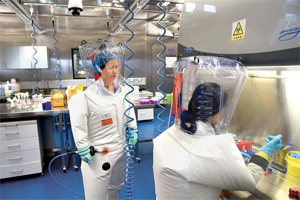December 10, 2020
One Hundred Sixteenth Congress
Congress of the United States
House of Representatives
Select Subcommittee on the Coronavirus Crisis
2157 Rayburn House Office Building
Washington, DC 20515-6143
Phone (202) 22504400
https://coronavirus.house.gov
James E. Clyburn, Chairman
Maxine Waters
Carolyn B. Maloney
Nydia M. Velazquez
Bill Foster
Jamie Raskin
Andy Kim
Steve Scalise, Ranking Member
Jim Jordan
Blaine Luetkemeyer
Jackie Walorski
Mary E. Green, M.D.
December 10, 2020
The Honorable Alex M. Azar II
Secretary
Department of Health and Human Services
200 Independence Avenue,
S.W. Washington, D.C. 20201
Dr. Robert R. Redfield
Director
Centers for Disease Control and Prevention
395 E Street, S.W., Suite 9100
Washington, D.C. 20201
Dear Secretary Azar and Director Redfield:
I write today to express my serious concern about what may be deliberate efforts by the Trump Administration to conceal and destroy evidence that senior political appointees interfered with career officials’ response to the coronavirus crisis at the Centers for Disease Control and Prevention (CDC). This week, a career CDC official stated in a transcribed interview with Select Subcommittee staff that she was instructed to delete an email in which a Department of Health and Human Services (HHS) appointee demanded that CDC alter or rescind truthful scientific reports he believed were damaging to President Trump. She also stated that she understood the instruction to delete the email came from CDC Director Robert Redfield. After the career official provided this troubling testimony, HHS abruptly canceled four transcribed interviews the Select Subcommittee had scheduled with other CDC employees. These actions follow months of obstruction by HHS, during which the Department has failed to produce key documents your staff promised to provide more than a month ago.
I am deeply concerned that the Trump Administration’s political meddling with the nation’s coronavirus response has put American lives at greater risk, and that Administration officials may have taken steps to conceal and destroy evidence of this dangerous conduct. It is critical that the Department end its stonewalling, preserve or recover all responsive documents, and provide the documents and witnesses that the Select Subcommittee needs to investigate this conduct and help protect American lives during this deadly pandemic.
Interview Reveals Instructions to Delete Critical Email and Delay Scientific Report
On December 7, 2020, Select Subcommittee staff conducted a transcribed interview of Dr. Charlotte Kent, Chief of the Scientific Publications Branch and Editor-in-Chief of the Morbidity and Mortality Weekly Report (MMWR) at CDC. During the interview, Dr. Kent stated that she was instructed to delete an August 8, 2020, email sent by HHS senior advisor Dr. Paul Alexander, and that she understood the direction came from Director Redfield. An excerpt from this email was later published in the press. However, the Department has not produced the email to the Select Subcommittee in response to our requests.
In the email, Dr. Alexander demanded that CDC insert new language in a previously published scientific report on coronavirus risks to children or “pull it down and stop all reports immediately.” He also wrote:
CDC tried to report as if once kids get together, there will be spread and this will impact school reopening. … Very misleading by CDC and shame on them. Their aim is clear. … This is designed to hurt this Presidnet [sic] for their reasons which I am not interested in.1
Dr. Kent stated in her interview that this email was sent to her, Dr. Redfield, and possibly HHS Assistant Secretary for Public Affairs Michael Caputo on Saturday, August 8. She stated that she was on vacation at the time, and she received a call “early Sunday morning” from the career CDC official who was editing the MMWR in her absence. This official explained that Dr. Michael Iademarco, who was Dr. Kent’s supervisor, had passed on an instruction from Dr. Redfield to delete the August 8 email from Dr. Alexander.
Dr. Kent stated in her interview, “I was instructed to delete the email.” She stated that she did not speak directly to Director Redfield about this instruction, but was informed that the instruction came from him, explaining, “that’s what I understood, that it came from Dr. Redfield.” She continued, “I went to look for it after I had been told to delete it, and it was already gone.” When asked who deleted the email, she replied, “I have no idea.”2
Dr. Kent stated, “I considered this to be very unusual.” When asked if she would normally retain this type of email, she stated, “typically it would have been.”3
Federal employees have affirmative obligations to preserve documents, and destruction of federal records is potentially illegal. The Federal Records Act requires the head of each federal agency to “make and preserve records containing adequate and proper documentation of the organization, functions, policies, decisions, procedures, and essential transactions of the agency.”4 Federal law also provides for up to three years of imprisonment for willful destruction of federal records.5
Dr. Kent also revealed other troubling conduct by HHS and CDC political appointees. For example, she stated that CDC delayed the publication of an MMWR article regarding a coronavirus outbreak at a Georgia summer camp to ensure that the scientific report would not be released until after Dr. Redfield’s July 31, 2020, testimony before the Select Subcommittee. Documents show that the article was originally scheduled to be released to the public on July 29, but the release was delayed for two days following a “requested delay by Dr. Redfield and HHS.”6 Dr. Kent explained that she understood that the reason for the delay was, “there was an interview with the congressional Oversight Committee, and there were some very important things that they wanted to convey during that meeting.” When asked whether she was referring to Dr. Redfield’s July 31 testimony before the Select Subcommittee, she responded, “that’s probably it,” adding, “[a]nd then the report would be released afterward.”7
At the July 31 hearing, Dr. Redfield testified that he believed schools should reopen for “face-to-face learning” in September 2020 and noted, “There’s really very significant public health consequences of the school closure.”8 He did not discuss the CDC study, which found that the virus spread widely among children at a summer camp in Georgia.9 The hearing ended at approximately 12:45 p.m., and CDC released the report approximately 15 minutes later at 1:00 p.m.10
HHS Is Obstructing the Select Subcommittee’s Investigation
The Select Subcommittee requested documents and transcribed interviews from HHS on September 14, 2020, following press reports indicating that political appointees had sought to block, alter, and delay CDC publications related to the coronavirus pandemic. The Select Subcommittee’s letter requested interviews beginning on September 22, 2020, and documents by September 28, 2020.11
On September 22, 2020, after HHS refused to make any witnesses available by the deadline, the Select Subcommittee sent a follow-up letter seeking compliance with the requests.12 The Department did not produce any documents by the September 28 deadline.
On October 2, 2020, Secretary Azar testified before the Select Subcommittee. During the hearing, I raised concerns about “clear political interference in the CDC’s efforts to carry out the department’s science-based mission.” I also stated, “I will hope that you will agree and begin producing the documents and allowing these witnesses to come forward next week.”13
Following the hearing, HHS did not produce any documents or witnesses, despite outreach from Select Subcommittee staff. On October 22, 2020, I wrote to Secretary Azar again, stating:
I urge you to end your obstruction of this crucial investigation, allow CDC officials to speak freely to Congress, and produce responsive documents. If you refuse to comply voluntarily, you will force the Select Subcommittee to consider issuing subpoenas.14
Our staffs subsequently engaged in several days of negotiations. On October 29, 2020, HHS agreed to make a complete production of all responsive documents by November 23, 2020, and to make five witnesses available for interviews. With respect to documents, Department staff wrote:
HHS will target November 9 for a complete production of documents for the five named custodians, as well as others whom we have identified to date. This will take a good amount of resources and will likely require contract-attorney reviewers, but we will aim to have the production to you by the 9th. We will also commit to target November 23 for a complete production for the remaining political appointees.15
Unfortunately, HHS has not honored this agreement. The Department has produced some documents, which consist primarily of publicly available articles, incomplete sets of emails related to Dr. Alexander, and a small number of other emails from CDC. During a call on December 2, 2020, Department staff refused to provide even an estimate of when HHS would produce the remaining documents, including responsive emails involving Secretary Azar, Dr. Redfield, and other senior officials.
On November 30, 2020, the Department agreed to make five witnesses available for transcribed interviews beginning on December 7, 2020. However, hours after Dr. Kent’s interview in which she revealed she was instructed to delete a key document, your staff wrote to Select Subcommittee staff that the Department is “cancelling the interviews that were scheduled for this week,” baselessly attacking the Select Subcommittee staff’s integrity as a pretextual justification for doing so.16
Need for Compliance
On September 14, 2020, the Select Subcommittee explained that this investigation seeks “to determine the scope of political interference with CDC’s scientific reports and other efforts to combat the pandemic, the impact of this interference on CDC’s mission, whether this interference is continuing, and the steps that Congress may need to take to stop it before more Americans die needlessly.”17
Those goals are even more urgent in light of the information obtained by the Select Subcommittee showing that top CDC and HHS officials may have taken steps to obstruct oversight into their activities and to delay the release of accurate scientific information regarding the coronavirus for political purposes. With coronavirus cases, hospitalizations, and deaths in the United States reaching new records, it is critical that the American people can trust the federal government to provide accurate public health information based on the best science—not based on politics.
For all these reasons, please produce all remaining responsive documents by December 15, 2020. If you do not make a complete production by that date, the Select Subcommittee will have no choice but to issue subpoenas to compel production.
In addition, the Select Subcommittee requests a transcribed interview with Director Redfield on December 17, 2020. The Select Subcommittee also requests that the transcribed interviews of the other four CDC officials that HHS abruptly canceled be rescheduled immediately.
Finally, please produce the following additional documents by December 15, 2020:
1. All documents and communications related to efforts to delete, conceal, or withhold Dr. Alexander’s August 8, 2020, email;
2. All documents and communications related to efforts to delete, conceal, or withhold any documents responsive to the Select Subcommittee’s September 14, 2020, requests;
3. All documents and communications related to instructions or guidance provided to any HHS or CDC employee to withhold information, documents, or testimony from the Select Subcommittee; and
4. A list of all federal officials and employees involved in any of the activities described in Requests 1 through 3.
Sincerely,
__________________________
James E. Clyburn
Chairman
cc: The Honorable Steve Scalise, Ranking Member
APPENDIX
Excerpts from Transcribed Interview with Dr. Charlotte Kent
Director Redfield Instructed CDC Officials to Delete Email from Dr. Alexander
Q: Who was that email sent to?
A: I don’t have a copy. I believe it was sent to me and Dr. Redfield, and I’m not exactly sure who -- it would -- given, you know, he’s addressing Michael, I would assume it was also sent to Mr. Caputo.
Q: You said -- you said that this was sent while you were on vacation. Do you recall when that was approximately?
A: It was, I think -- I think he sent it -- I think it was maybe, like, August. It was -- he sent it, I think, on a Saturday in August around -- I can’t -- I don't remember the date exactly, but, like, August 7th, 8th, around in there, whatever that Saturday is.
Q: You said you don’t have a copy. I realized we haven’t given you one because we don’t seem to have one. Did you -- do you still have one in your possession?
A: I don’t have one in my possession.
Q: Why is that?
A: While I was on vacation, the woman who was serving as the acting and editor-in-chief, there was discussion with her -- her name is [REDACTED] -- and Dr. Iademarco about this. Dr. Iademarco reached out to Dr. Redfield, and so Dr. Redfield said we wouldn’t be doing this according to this -- you know, about what I heard from [REDACTED] who heard from, you know, Admiral Iademarco, and that we did not -- that I was instructed to delete the email because it would be part of Dr. Redfield’s, you know, the documentation that he has in his email. So actually when I went back to delete, it was already gone.
Q: Sorry. Who instructed you to delete it?
A: I heard from [REDACTED], who, as I understood, heard from Dr. Iademarco, who heard from Dr. Redfield to delete it.
Q: Sorry. I just want to make sure I understand. It sounds like you’re saying Dr. Redfield told Dr. Iademarco --
A: Yes.
Q: -- who told [REDACTED], who told you.
A: Yes, right. Yeah. So I did not have direct -- that’s what I understood, that it came from Dr. Redfield, and that it was also stated that it would -- because of Dr. Redfield, you know, all of his email are part of the public record, that it would be maintained in that.
Q: I see. When you say it was already gone, what does that mean?
A: That means when I went to look for it, it was not there.
Q: Did you go to look for it in response to a request from our -- the Select Subcommittee to produce documents?
A: No, I went to look for it after I had been told to delete it, and it was already gone.
Q: Why did you go to look for it?
A: Because I had been instructed to delete it, and so I went to look for it to delete it, and it was already gone.
Q: Oh, I see. You didn’t actually delete it yourself because it was already gone.
A: No. No, uh-huh. It was already -- yes.
Q: Do you know -- do you know who deleted it?
A: I have no idea.
. . .
Q: Did you -- so you learned while you were on vacation at this point in August that -- about this email and Dr. Alexander’s efforts to -- you referenced that he’d wanted to change MMWRs. What else -- did anything else happen? Did you learn about that through anyone other than the conversation you referenced with [REDACTED]?
A: I mean -- I mean, we just discussed the content of this email, but, you know, I had been assured, you know, that Dr. Redfield was not going to -- you know, didn’t think this was appropriate.
Q: He didn’t think that what was appropriate?
A: To comply with the request in this email.
. . .
Q: Do you recall when [REDACTED] told you to delete the email?
A: It would be the day after it was sent. So as I recall, Dr. Alexander sent it at night, and she called me early Sunday morning about it. I think I actually -- I read it and told her that I, you know, I would be happy to talk to her whenever she was available.
Q: You read what?
A: Oh, so sorry. So I read the email early -- I think early Sunday morning. I believe he sent it late Saturday, and he -- I just -- and I think she had sent me a heads up about it. And so she and I talked early in the morning, and then she talked -- and then she just told me that Dr. Iademarco and Dr. Redfield will discuss it on Sunday --
Q: Yeah.
A: -- at a civil hour, and then I think she communicated after that discussion. You know, it was sort of down -- you know, back up, like, that she would -- you know, after Dr. Redfield talked to Dr. Iademarco, he -- and told him that, you know, we would not be complying with this request, that’s when she got back to me with that statement and the request to delete the email.
Q: Did you discuss any -- did anyone raise any concerns to you about the request to delete the email?
A: Well, certainly the request is not typical. It’s not something that we would -- you know, it was clear that the director said he would not comply with it. I mean, I think it’s -- you know, it’s surprising, you know, when you receive something like this.
Q: Are you aware of -- have you received training or are otherwise aware of document retention obligations for government officials?
A: Yes, the -- I’m aware that we are to keep documents.
Q: So when you were told to delete the email --
A: Mm-hmm.
Q: -- did you discuss with anyone whether that request raised any concerns regarding those obligations?
A: I didn’t discuss with anyone. I’m also familiar with the -- that, you know, the director’s email is something that, you know, is not tampered with. And so when I was -- I considered this to be very unusual. I think that the request to -- you know, I do know that, you know, certain parts of -- persons in the Agency, like Center directors and the director, their email, you know, cannot be deleted. So I felt like there -- honestly, I felt like there were safeguards that if it was needed to discover this information, it would be readily discoverable.
Q: Is this a type of email that you would’ve normally kept under your typical practices?
A: Yes, typically it would have been.
. . .
Q: Do you know if anyone other than the people that you’ve described in the -- in the chain that was communicated down to you were aware of the request to delete that email?
A: I am not aware of -- you know, I can’t remember if I discussed it with -- I might’ve discussed it with the [REDACTED] of MMWR. It’s the sort of thing I typically would have, but I don’t remember if I did for sure because, technically, I was on vacation. So, but that, you know, that would’ve been the only people within the Agency, other person possibly.
Q: I'm sorry. What’s the name of that person?
A: Her name is [REDACTED].
Q: Did anyone ever tell you not to discuss Dr. Alexander’s request?
A: I don’t recall that. I don’t. Yeah, I don’t -- I don’t recall that.
Q: Did anyone ever tell you how you should address Dr. Alexander’s request? And I’m not talking about prep for this interview.
A: I don’t -- I don’t recall being given explicit guidance about, you know, that particular email other than to delete it.
Director Redfield and HHS Officials Delayed Release of Damaging Scientific Report Until After Congressional Testimony
Q: These two emails relate to each other. They were both sent within about a minute apart. One is from you to Michael Iademarco, and it says at the top: “Amanda called me to say -- request a delay by Dr. Redfield and HHS. Delay will make for better timing.” That’s Exhibit 12. On Exhibit 13, four emails down the chain, you write, “Just got the call. Request a delay until Friday by Dr. Redfield. Timing will be better.” So in any case, this, I think, is the delay that you’ve already talked to us about.
A: Yes.
Q: Do you have any understanding of why was the timing better?
A: The timing was better -- well, one, it was only a 2-day delay, so it’s not a long delay, and it couldn’t be -- because of our production processes, it couldn't be -- it couldn’t be released on Thursday because that’s when we do our regular content. So as I understood, that there was a desire to make the communication about this report, you know, kind of front and center, that there wouldn’t be a distraction because of other things that were occurring, and so that was why the delay. Like, when we schedule reports, we really try to think about the communication because generally you can only communicate effectively about one topic, you know. And if there’s a lot of other things that are going to be in the news, then we try to do -- you know, kind of do things in a smooth way so that there’s not a lot of dissonance. So the -- my understanding was that they felt it would be more effectively communicated if it was delayed until Friday.
Q: You said other things that were happening. Do you know what other things?
A: I think the -- as I understood, on Thursday, there was an interview with the congressional Oversight Committee, and there were some very important things that they wanted to convey during that meeting.
Q: Is this the only time that you’re -- that you can recall at any -- at any point in time during your response or otherwise where somebody asked you to delay the publication of an MMWR, other than for a, you know, scientific review and whatnot?
A: This is the only time I -- well, you know, this is -- I can’t say that there wasn’t some other time. We published 163 reports, and I cannot say that there has never been another time where we decided to delay something because it would be better from a communications perspective to release it a little bit later because there was going to be guidance that was coming out that was going to be ready, and they, you know, amplified the message. I certainly would have discussions about that all the time. This is the only time that I recall getting a request, you know, that was related to, you know, Dr., you know, Redfield and communication around him. Because we do try to be -- again, effectively communicate things and to have things be -- you know, the timing not be disruptive, it didn’t stand out especially in my mind that this, you know. And, again, it was only delaying it by 2 days, so. You know, as we -- as you -- if you go through, we’ve delayed a number of reports, but --
. . .
Q: You mentioned -- you said a briefing with congressional Oversight. Was that the -- Dr. Redfield’s testimony before the Select Committee that you’re mentioning?
A: I am not -- I’m not -- you know, I can’t recall exactly, you know, if that’s the proper, you know, thing. It was something that was happening on the Thursday.
. . .
Q: Sorry. Just to follow up on that, I believe there was a hearing that Friday on July 31st.
A: Oh, okay. So yeah.
Q: At which Dr. Redfield testified before our committee. So is it possible that’s what was being referred to? That was -- that was Friday, July 31st at 9:00 a.m.
A: Possibly, yeah. Yeah. So, oh, that’s probably it.
Q: Okay. Thank you.
A: And then the report would be released afterward.
_______________
Notes:
1 See Trump Officials Interfered with CDC Reports on Covid-19, Politico (Sept. 12, 2020) (online at http://www.politico.com/news/2020/09/11 ... -19-412809) (quoting from August 8, 2020, email from Dr. Alexander).
2 Transcribed Interview of Dr. Charlotte Kent (Dec. 7, 2020).
3 Id.
4 See 44 U.S.C. §§ 3101-3107 (Chapter 31, Records Management by Federal Agencies); 44 U.S.C. §§3301-3314 (Chapter 33, Disposal of Records); and 36 C.F.R., Chapter XII, Subchapter B (Records Management).The definition of “records” includes emails. See 44 U.S.C. § 3301(a)(2) (defining “records” as inclusive of “all traditional forms of records, regardless of physical form or characteristics, including information created, manipulated, communicated, or stored in digital or electronic form”).
5 18 U.S.C. § 2071.
6 Email from Charlotte Kent, Chief of the Scientific Publications Branch, Centers for Disease Control and Prevention, to Michael Iademarco, Director of the Center for Surveillance, Epidemiology, and Laboratory Services, Centers for Disease Control and Prevention (July 28, 2020) (online at coronavirus.house.gov/sites/democrats.coronavirus.house.gov/files/SSCCManual-000059-61_Redacted.pdf).
7 Transcribed Interview of Dr. Charlotte Kent (Dec. 7, 2020).
8 Select Subcommittee on the Coronavirus Crisis, Hearing on “The Urgent Need for a National Plan to Contain the Coronavirus” (July 31, 2020) (online at coronavirus.house.gov/subcommittee-activity/hearings/hybrid-hearing-urgent-need-national-plan-contain-coronavirus).
9 Christine M. Szablewski, et al., SARS-CoV-2 Transmission and Infection Among Attendees of an Overnight Camp — Georgia, June 2020, Morbidity and Mortality Weekly Report (Aug. 7, 2020) (online at http://www.cdc.gov/mmwr/volumes/69/wr/m ... mm6931e1_w).
10 Centers for Disease Control and Prevention, Media Statement: Study Highlights Importance of CDC Mitigation Strategies (July 31, 2020) (online at stacks.cdc.gov/view/cdc/91341) (noting that CDC’s media statement concerning the MMWR article was “Embargoed until: Friday, July 31, 2020, 1 p.m. ET”).
11 Letter from Chairman James E. Clyburn, Select Subcommittee on the Coronavirus Crisis, et al. to Secretary of Health and Human Services Alex M. Azar II and Director Robert R. Redfield, Centers for Disease Control and Prevention (Sept. 14, 2020) (online at coronavirus.house.gov/sites/democrats.coronavirus.house.gov/files/2020-09-14.Majority%20to%20Azar%20and%20Redfield%20re%20HHS%20and%20CDC%20on%20Political%20Interference%20.pdf).
12 Letter from Chairman James E. Clyburn, Select Subcommittee on the Coronavirus Crisis, to Secretary of Health and Human Services Alex M. Azar II (Sept. 22, 2020) (online at coronavirus.house.gov/sites/democrats.coronavirus.house.gov/files/2020-09-22.Clyburn%20to%20Azar%20re%20HHS%20TIs%20.pdf).
13 Select Subcommittee on the Coronavirus Crisis, Hybrid Hearing with Secretary of Health and Human Services Alex M. Azar II (Oct. 2, 2020) (online at coronavirus.house.gov/subcommittee-activity/hearings/hybrid-hearing-secretary-health-and-human-services-alex-m-azar-ii).
14 Letter from Chairman James E. Clyburn, Select Subcommittee on the Coronavirus Crisis, to Secretary of Health and Human Services Alex M. Azar II (Oct. 22, 2020) (online at coronavirus.house.gov/sites/democrats.coronavirus.house.gov/files/2020-10-22.Clyburn%20to%20Azar%20re%20TIs%20.pdf).
15 Email from Staff, Department of Health and Human Services, to Staff, Select Subcommittee on the Coronavirus Crisis (Oct. 29, 2020).
16 Email from Staff, Department of Health and Human Services to Staff, Select Subcommittee on the Coronavirus Crisis (Dec. 7, 2020). HHS counsel claimed that the basis for this sudden cancellation was that Select Subcommittee staff counsel asked the witness whether, in addition to being instructed to delete a key email, she was instructed by anyone to withhold other information from Congress. Instructing an agency employee to obstruct a congressional matter is highly inappropriate, potentially illegal, and not protected by any valid privilege. The Select Subcommittee has a strong interest in understanding whether agency officials are instructing employees to obstruct this investigation, especially in light of Dr. Kent’s statement that she was directed to delete a document that was subsequently withheld from the Select Subcommittee.
17 Letter from Chairman James E. Clyburn, Select Subcommittee on the Coronavirus Crisis, et al., to Secretary of Health and Human Services Alex M. Azar II and Director Robert R. Redfield, Centers for Disease Control and Prevention (Sept. 14, 2020) (online at coronavirus.house.gov/sites/democrats.coronavirus.house.gov/files/2020-09-14.Majority%20to%20Azar%20and%20Redfield%20re%20HHS%20and%20CDC%20on%20Political%20Interference%20.pdf).

